drying
Preserving foods through dehydration serves two purposes: it concentrates flavor and prolongs shelf life by extracting moisture from fruits, vegETABLEs, and meats.
drying basics
The dehydrator The best way to dry foods is in a dehydrator. The low temperatures and air circulation are specifically designed for this task. In some recipes (only where specified), you can dehydrate in your oven. If you’re unsure about the accuracy of the oven’s temperature, check it using an oven thermometer and adjust temperature accordingly before using oven to dehydrate foods. The temperature needs to be low enough to dry out foods evenly without burning them.
vegetables must be dried until firm and crisp to prevent spoilage.
fruits can be softer than vegetables when dried because their sugar content helps preserve them.
certain fruits, such as apples and peaches, tend to brown, or oxidize, which does not affect flavor. Dipping fruits in an ascorbic-acid color-keeper solution (Freezing Apples, Pears & Stone Fruit) before drying helps prevent oxidation.
some fruit pieces may be more moist than others after drying, which can promote mold growth. To prepare for storing, place cooled, dried fruit pieces in a plastic container, filling it about two-thirds full. Cover container and let stand 7 to 10 days, shaking contents daily. Any excess moisture will be absorbed by the drier pieces of fruit. (If moisture appears in the container, return fruit to dehydrator.)
Maple-Cracked Pepper Jerky
hands-on time 45 minutes
steam 10 minutes
cool 10 minutes
freeze 45 minutes
marinate 1 hour
dehydrate 5 hours
- 2 lb. boneless beef chuck roast and/or boneless beef sirloin roast, trimmed of excess fat
- 1 cup reduced-sodium soy sauce
- 2 Tbsp. pure maple syrup
- 2 Tbsp. olive oil
- 4 cloves garlic, minced
- 2 tsp. cracked assorted peppercorns or black peppercorns
- 2 tsp. sea salt
- 1 tsp. dried thyme, crushed
1. Place a steamer insert in a 12-inch skillet. Add enough water to the skillet to come just below the steamer insert. Bring water to boiling. Place roast in steamer insert. Cover; steam 10 to 15 minutes or until an instant-read thermometer inserted into the center of the roast registers 160°F. Let cool 10 minutes. Wrap meat in plastic wrap; freeze about 45 minutes or until firm.
2. Using a sharp knife, cut meat across the grain into ⅛- to ¼-inch slices that are 5 to 6 inches long.
3. For marinade, in a large bowl combine remaining ingredients. Add meat to marinade, stirring to coat the meat evenly. Cover and marinate in the refrigerator 1 to 2 hours. (The longer you marinate, the stronger the flavor.) Drain meat in a colander set in a sink; discard marinade.
4. Place meat slices in a single layer on mesh-lined dehydrator trays. Dehydrate at 160°F for 5 to 6 hours or until dry. To check doneness, remove one slice from dehydrator; cool. Slice should easily break when done. Store in a covered container at room temperature up to 3 weeks before using.
Makes 16 servings (about 1 oz. each).
Oven Directions Prepare as directed through Step 3. Preheat oven to 200°F. Place meat on a wire rack placed in a shallow baking pan. Bake 3½ to 5 hours or until dry. To check doneness, remove one slice from oven; cool. Slice should easily break when done. Store as directed.
each serving 87 cal., 4 g fat (2 g sat. fat), 39 mg chol., 255 mg sodium, 1 g carb., 0 g fiber, 1 g sugars, 12 g pro.

MAPLE-CRACKED PEPPER JERKY
Sriracha-Honey Beef Jerky
hands-on time 20 minutes
steam 10 minutes
cool 10 minutes
freeze 30 minutes
marinate overnight
dehydrate 6 hours
- 2 lb. top or bottom round steak, cut 1 to 1½ inches thick and trimmed of excess fat
- ⅓ cup reduced-sodium soy sauce
- ⅓ cup sriracha sauce
- 3 Tbsp. honey
- 3 Tbsp. olive oil
- 2 tsp. salt
- 1 tsp. chili powder
1. Place a steamer insert in a 12-inch skillet. Add enough water to the skillet to come just below the steamer insert. Bring to boiling. Place steak in the steamer insert. Cover; steam 10 to 15 minutes or until an instant-read thermometer inserted into the center of the meat registers 160°F. Let cool 10 minutes. Wrap meat in plastic wrap or waxed paper; freeze about 30 minutes or until firm.
2. Using a sharp knife, cut meat across the grain into ⅛- to ¼-inch slices.
3. For marinade, in a large bowl combine remaining ingredients. Add meat to marinade, stirring to coat meat evenly. Cover; marinate in the refrigerator overnight. Drain meat slices in a colander set in sink; discard marinade.
4. Place meat slices in a single layer on mesh-lined dehydrator trays. Dehydrate at 160°F about 6 hours or until dry. To check doneness, remove one slice; cool. Slice should easily break when done. Store cooled jerky in a covered container at room temperature up to 3 weeks.
Makes 16 servings (about 1 oz. each).
each serving 102 cal., 4 g fat (1 g sat. fat), 35 mg chol., 435 mg sodium, 4 g carb., 0 g fiber, 4 g sugars, 14 g pro.

Sriracha-Honey Beef Jerky
THE BEEF is precooked since the low heat of the dehydrator can’t get the meat up to a safe temperature fast enough. When cutting the beef, look for the “grain” of the meat—which refers to the long muscle fibers that run parallel to each other. Cutting across these fibers makes cuts more tender and less stringy.
OVEN-DRYING is not recommended for this recipe.
Dried Tomatoes
hands-on time 15 minutes
dehydrate 11 hours
- 3 lb. roma tomatoes, quartered lengthwise
- 2 Tbsp. fresh thyme leaves
- 1 Tbsp. packed brown sugar
- 1½ tsp. kosher salt
- ½ to ¾ tsp. cracked black pepper
1. Sprinkle tomatoes with thyme, brown sugar, salt, and pepper. Place tomatoes in a single layer on mesh-lined dehydrator trays. Dehydrate at 135°F for 11 to 12 hours or until leathery but not brittle. Remove tomatoes as they finish drying and allow remaining tomatoes to continue drying. Cool to room temperature.
2. Pack dried tomatoes in resealable plastic freezer bags. Freeze up to 9 months. Thaw before using.
Makes 10 servings (¼ cup each).
Oven Directions Preheat oven to 225°F. Line a 15×10-inch baking pan with parchment paper. Arrange tomatoes in a single layer on parchment paper. Sprinkle with thyme, brown sugar, salt, and pepper. Bake 5½ to 6½ hours or until leathery but not brittle, turning tomatoes after 2 hours. Remove tomatoes as they finish drying and allowing remaining tomatoes to continue drying. Continue as directed.
each serving 30 cal., 0 g fat, 0 mg chol., 302 mg sodium, 7 g carb., 2 g fiber, 5 g sugars, 1 g pro.

DRIED TOMATOES
TOMATOES of any kind can be used here—try halved cherry tomatoes or regular tomatoes cut into ¼-inch slices. Place tomatoes, cut sides up, on mesh-lined dehydrator trays or in a parchment-lined baking pan. Dry cherry tomatoes in dehydrator 10 to 11 hours or in oven 4 to 5 hours. Dry sliced tomatoes in dehydrator 7½ to 8½ hours or in oven 3 to 4 hours.
A taste of tomato
The bold, concentrated flavor of dried tomatoes makes them a savory addition to salad dressings, salads, sauces, soups, and antipasti.
Dried Cranberries
hands-on time 20 minutes
dehydrate 11 hours
- 2 12-oz. pkg. fresh or frozen cranberries
- 2 cups water
- ¼ cup sugar
- 2 Tbsp. vegetable oil
1. In a 3- or 4-qt. saucepan combine cranberries and the water. Bring to boiling; remove from heat. Let stand, covered, 2 minutes; drain well. Spread drained cranberries on paper towel-lined trays, pressing gently to release juices. Transfer cranberries to a large bowl. Add sugar and oil; toss to coat.
2. Arrange cranberries in a single layer on mesh-lined dehydrator trays, separating the berries as much as possible.
3. Dehydrate at 135°F for 11 to 12 hours or until dry and chewy, rearranging trays once or twice during drying. Let cool completely. Store in a covered container at room temperature up to 6 months.
Makes 8 servings (¼ cup each).
each serving 94 cal., 4 g fat (0 g sat. fat), 0 mg chol., 2 mg sodium, 17 g carb., 4 g fiber, 10 g sugars, 0 g pro.
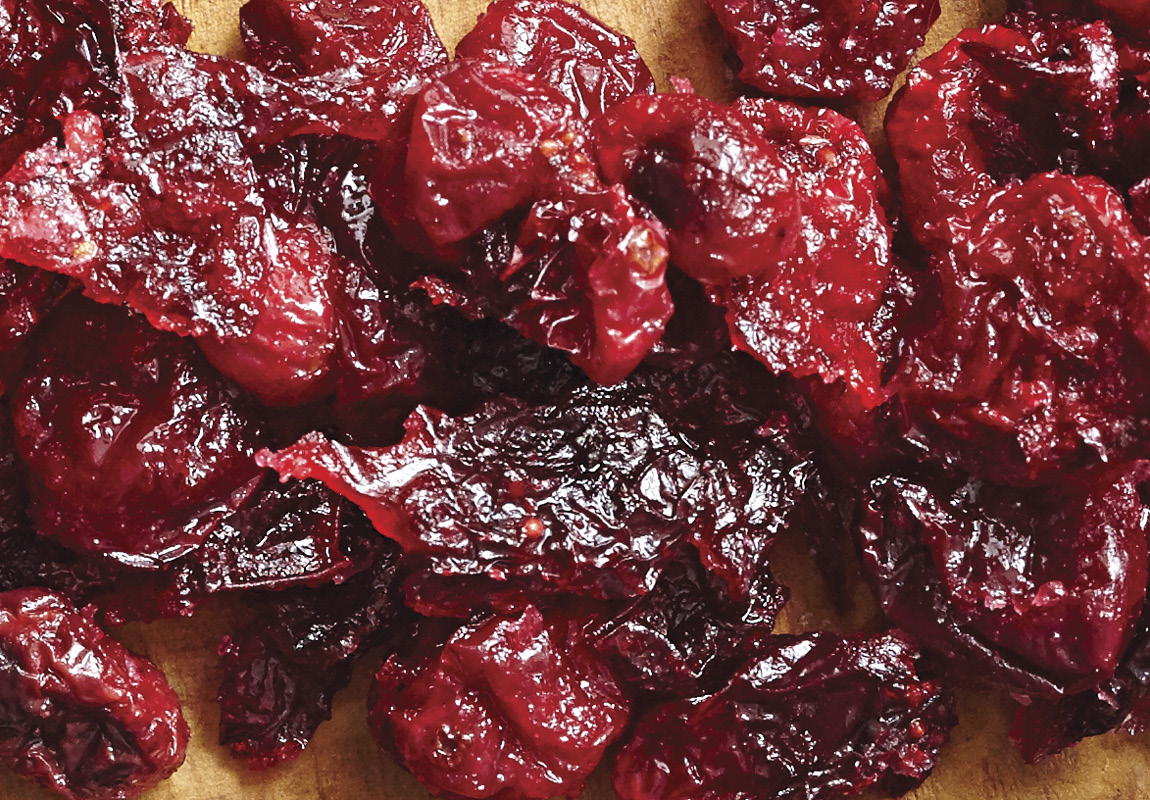
Dried Cranberries
Strawberry Fruit Leather
hands-on time 30 minutes
cook 35 minutes
dehydrate 12 hours
- 2 lb. ripe fresh strawberries, hulled and coarsely chopped
- 1 cup sugar
- 2 tsp. lemon zest
- Nonstick cooking spray
1. In a food processor combine strawberries and sugar. Cover and process until smooth. Press strawberry mixture through a fine-mesh sieve placed over a bowl; discard seeds remaining in sieve.
2. In a 4-qt. heavy saucepan combine the strawberry mixture and the lemon zest. Bring to boiling over medium-high heat, stirring occasionally; reduce heat. Simmer, uncovered, 35 to 40 minutes or until the mixture is thick enough to mound slightly on a spoon and is reduced to about 1½ cups, stirring frequently.
3. Lightly coat two fruit leather dehydrator sheets with nonstick spray. Divide strawberry mixture between the prepared leather sheets, spreading to an even ¼-inch thickness.
4. Dehydrate at 135°F for 12 to 13 hours. Turn leather over during last 1 hour of dehydrating to allow bottoms to dry.
5. Peel fruit leather from leather sheets. Roll into a spiral; wrap in plastic wrap. Store at room temperature up to 2 weeks. To serve, cut into pieces.
Makes 16 servings.
Oven Directions Preheat oven to 170°F. Line a 15×10-inch baking pan with parchment paper. Coat parchment with cooking spray. Pour strawberry mixture into the prepared pan, spreading to an even ¼-inch thickness. Bake 10 to 11 hours, rotating pan occasionally. Holding parchment paper, lift fruit leather out of pan; cool. Roll leather in a spiral; wrap in plastic wrap. Store as directed.
each serving 66 cal., 0 g fat, 0 mg chol., 1 mg sodium, 17 g carb., 1 g fiber, 15 g sugars, 0 g pro.

STRAWBERRY FRUIT LEATHER
Herbed Strawberry Fruit Leather Prepare as directed, except substitute 2 Tbsp. chopped fresh tarragon, basil, mint, and/or thyme for the lemon zest.
Strawberry-Ginger Fruit Leather Prepare as directed, except substitute 1 Tbsp. grated fresh ginger for the lemon zest.
Strawberry-Kumquat Fruit Leather Prepare as directed, except puree ½ cup quartered, seeded kumquats with the strawberries and sugar in Step 1. Omit the lemon zest.
herb-drying options
hang in bunches Gather small amounts of herbs into bunches, tie stems with 100%-cotton kitchen string, and hang in a dry area with good air circulation until dry.
lay flat Scatter herb sprigs on a sheet of waxed paper and let them dry, undisturbed, at room temperature.
dehydrator Dehydrators cut drying time significantly and dry herbs evenly. Prepare herbs and dehydrate as directed. Cool herbs completely before storing.
microwave This method works best with woody-stemmed herbs such as rosemary, thyme, and oregano. Do not microwave delicate herbs like basil and parsley. They will wither and turn brown and might cause the paper towels to catch fire.
arrange Place herbs in a single layer between two paper towels. Microwave 1 minute, testing for dryness every 20 seconds. Remove the dried herb leaves from the stems.
Dehydrator-dried Herbs
- 1 bunch (about ¾ oz.) fresh herbs
1. Wash herbs in cool water; drain. Use a salad spinner to dry herbs or pat dry with paper towels.
2. Prepare herbs for drying in a dehydrator, following guidelines opposite.
3. Place herb leaves in a single layer on a dehydrator tray. If herb leaves are very small, line the dehydrator tray with a mesh or leather dehydrator sheet. Dehydrate at 95°F until leaves are crisp enough to crumble. If leaves blow around during dehydrating, place another mesh dehydrator sheet on top of the herbs.
4. Cool herbs. Crumble larger leaves, but keep smaller leaves intact for best flavor (crush when you use them for cooking). Label and store herbs in airtight containers in a cool, dark place.

Italian Seasoning Measure, crush lightly, and combine 1 Tbsp. each dried basil, dried oregano, dried rosemary, and dried thyme. Stir in ¼ tsp. crushed red pepper.
Poultry Seasoning Measure, crush lightly, and combine 1 Tbsp. each dried sage, dried thyme, and dried marjoram and 1 tsp. dried rosemary. Stir in ½ tsp. black pepper and ¼ tsp. celery salt.
Greek Seasoning Measure, crush lightly, and combine 1 Tbsp. dried oregano, 2 tsp. dried thyme, and 1 tsp. each dried basil and dried marjoram. Stir in 1 tsp. dried minced onion and ½ tsp. dried minced garlic.
storing
Place dried herbs in airtight containers and store in a cool, dark place up to 1 year. Before using, crush dried herbs with your fingers to release their oils and boost their flavor.
drying herbs
Prepare herbs as directed (opposite). To determine if an herb is done drying, crush a little with your fingers. A completely dry herb crumbles easily. Each of these timings is for 1 bunch of the fresh herb. (Timings and amounts vary depending on the freshness of the herbs, size of the leaves, and air humidity and temperature.)

dill
HANGING OR ON WAXED PAPER
24 hours
DEHYDRATOR
12 hours
dried amount
2 Tbsp.
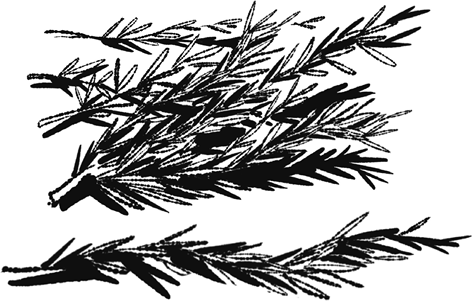
rosemary
hanging OR On waxed paper
4 days
DEHYDRATOR
12 hours
dried amount
5 Tbsp.

Dehydrator prep
SMALL-LEAF HERBS
Pull leaves from stems and discard stems.
BROAD-LEAF HERBS
Remove leaves from stems. For quicker drying, cut each leaf in half lengthwise.
CHIVES
Cut into ¼- to ½-inch lengths.

marjoram
hanging OR On waxed paper
1½ days
DEHYDRATOR
5 hours
dried amount
5 Tbsp.

sage
hanging OR On waxed paper
4 days
DEHYDRATOR
8 hours
dried amount
4 Tbsp.

basil
hanging OR On waxed paper
6 days
DEHYDRATOR
18 hours
dried amount
4 Tbsp.
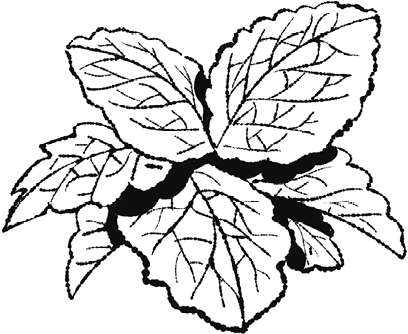
mint
hanging OR On waxed paper
4 days
DEHYDRATOR
8 hours
dried amount
3 Tbsp.

tarragon
hanging OR On waxed paper
2 days
DEHYDRATOR
17 hours
dried amount
3 Tbsp.
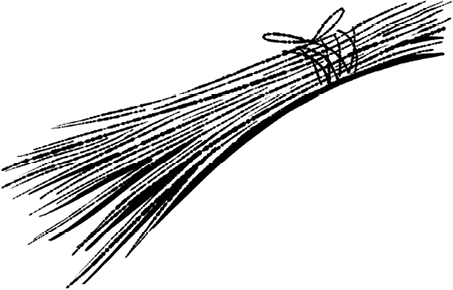
chives
hanging OR On waxed paper
24 hours
DEHYDRATOR
7 hours
dried amount
2 Tbsp.
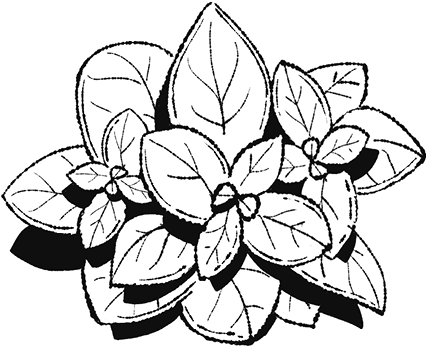
oregano
hanging OR On waxed paper
4 days
DEHYDRATOR
12 hours
dried amount
3 Tbsp.

thyme
hanging OR On waxed paper
2½ days
DEHYDRATOR
5 hours
dried amount
3 Tbsp.